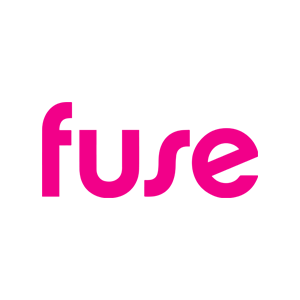When Change Is The Only Constant
Alpha, Beta, Delta, and Omicron: you’d not be blamed for having visions of a Greek tragedy colliding with an episode of the Transformers. But to businesses, it just spells one thing: constant and unpredictable disruption. On the plus side, disruption has been a catalyst to a new age of innovation, operational resilience and a wave of acceptance and change as businesses face many hard truths.
Perhaps one of the hardest truths is that Learning and Development hasn’t been working as well as most companies would like to admit. Beyond that, continual disruption is exposing the cracks in many companies’ L&D strategies: the pandemic has forced most L&D functions to bin formal, in-person learning, and to try and get learning online as quickly as possible. In many cases, this move failed as companies have realized that swapping in-person courses for online course-based learning isn’t working.
There have been many lessons learned, and our friends at RedThread Research have been leading the way in delving into the key trends surrounding learning methods during this time of unparalleled disruption. Their new report, Next-Gen Learning Methods: What To Use, How To Choose, And When To Cut Them Loose explores how companies are leveraging learning methods in different ways to help employees develop.
What we like best is how well RedThread’s research complements much of the research we’re doing at Fuse, as well as our in-flow-focused approach to learning-driven performance. Read on to hear more about the synergy our recommendations are producing with future-focused learning leaders today.
L&D Is Struggling To Swap Courses For Real-Time Learning
Did that get your attention? It’s actually the top headline that came out of our most recent research. We polled 250 senior L&D and HR leaders across the UK and US and found that too many organizations are struggling to replace legacy courses with the modern business demand for real-time learning.
It’s a big issue, because as RedThread discovered in its research, formal course-led learning hasn’t, for the most part, supported the ways employees learn for some time now. As report authors Heather Gilmartin Adams and Dani Johnson put it, “Survey after survey has shown that employees learn more through the informal stuff—and therefore rely more on it—than the heavy, expensive courses L&D functions have tended to focus on.”
What they call "the informal stuff" is what we call "in-flow learning." It’s quick learning in the flow of work, and it allows employees to apply knowledge at the point of need. It’s also shown time and time again through successful Fuse customers that it’s got the power to boost productivity, performance, and profitability.
How In-Flow Learning Complements Our New Ways Of Working
We often write about our passion for the effectiveness of in-flow learning. Whether it’s Fuse founder and president Steve Dineen talking about the power of knowledge at the point of need, or Fuse CEO Luke Oubridge talking about why you need to flip your L&D budget on its head (to strike a better balance between out-of-flow and in-flow learning), we’re big believers in our learning approach.
However, an area we haven’t covered before and which RedThread does beautifully in its Next-Gen Learning Methods report is how well in-flow learning is suited as a learning approach in today’s new ways of working. Whether we’re talking hybrid, remote, or a flexible working environment, one thing is for certain: traditional course-led learning isn’t adaptable or flexible enough to cater to anything but a 100% in-person workforce.
The reality is that (as according to RedThread) it’s also not agile or responsive enough. Learning has to be able to pivot and keep pace with upskilling and reskilling initiatives. It needs to be continuous. And several steps ahead of the disruptive landscape we're living in.
With in-flow learning at their fingertips, employees are well-positioned to flex and adapt as necessary. However, the harsh reality is that most companies aren’t lining their employees up for success in this area. Our own research found that despite 92% of respondents agreeing that access to knowledge on demand is a key driver for business performance, as many as 40% of organizations are still working to course-led learning strategies. And just 4% are leading with real-time learning on the job.
In the age of disruption, it’s time to pull out the stops to do what it takes to become agile. The new ways of working are here to stay.
An Employee Development Framework For Agility
We’re big fans of RedThread’s Employee Development Framework (pp. 10-38), and what struck us more than anything is how well the framework lends itself to agility in learning.
RedThread describes the framework as “the behaviors orgs should be enabling in their employees in order to have a solid learning culture. We use this framework to make sense of the world of employee development and to help leaders identify any gaps they should be paying attention to.”
The Employee Development Framework shows that L&D functions should focus their time on enabling employees to:
- Plan
Understand their career options and the development they’ll need in order to get them where they want to go. - Discover
Find the opportunities and content that will help them develop the knowledge and skills they need to take their career in the direction they want. - Consume
Easily access relevant learning content—a challenging feat, given the amount of content available. - Experiment
Practice new knowledge and skills on the job; try, fail, and learn from that failure. - Connect
Learn from one another to gain new knowledge and skills. - Perform
Learn on the job and improve performance at the same time.
The framework really works for us on two levels: firstly, it reflects the value we hold in our approach to learning, where employees should be able to easily find and use knowledge that is personalized to their learning paths and goals. It maps well to some research we ran not long ago with Brandon Hall, where we explored the idea of why personalized learning in the flow of work is critical for business success.
The framework also highlights the value we hold in social learning, which is a fundamental pillar of Fuse. Social learning is at the heart of engagement. And at Fuse, it’s at the heart of Learning and Development as well.
However, what the framework also highlights—and what we’ve begun to really value in this new reality we’re all working in—is just how important it is to have all of these elements working together. This is absolutely vital in order to gain the new knowledge and skills you may need at the drop of a hat. Our own research tells us that the most important success factors for upskilling on the job are the ability to find and share knowledge (68%), followed by access to learning in the flow of work (58%).
These are only a few of the many key takeaways from this report. What you may learn from it could help your organization improve the results it’s reaping from L&D. A little agility is likely to go a long way.










